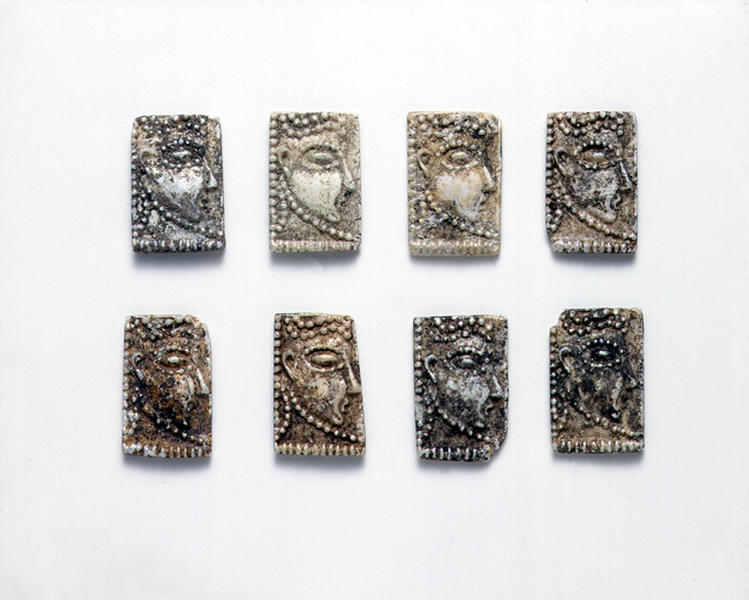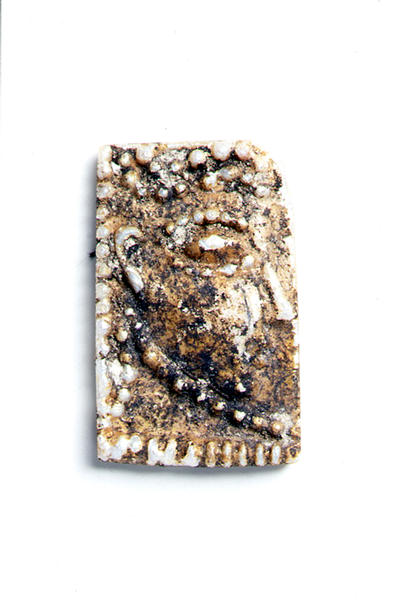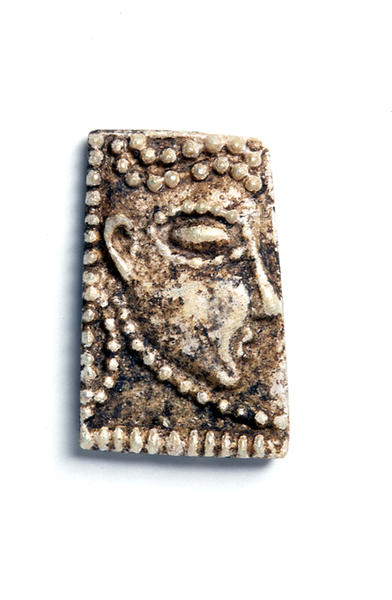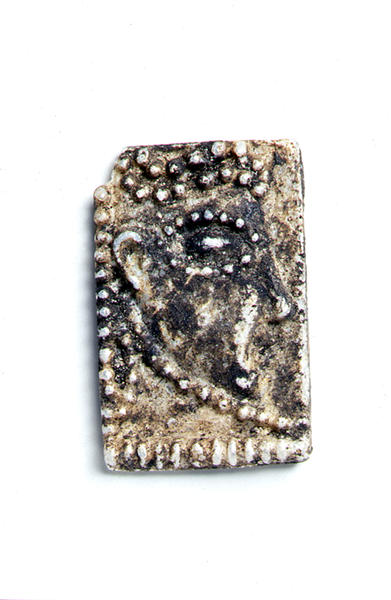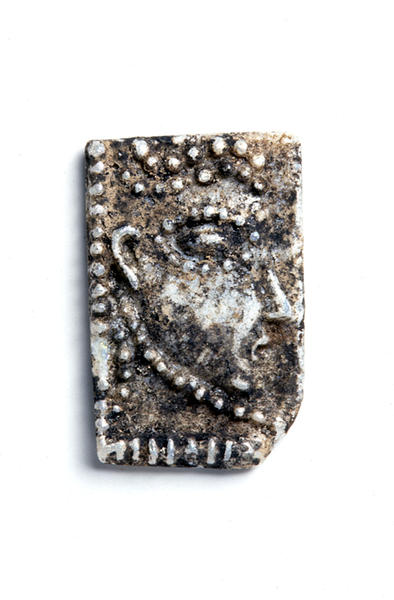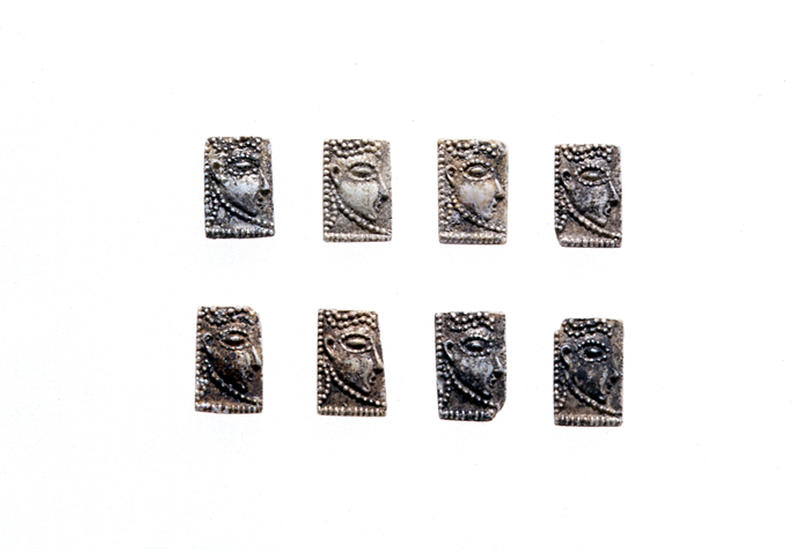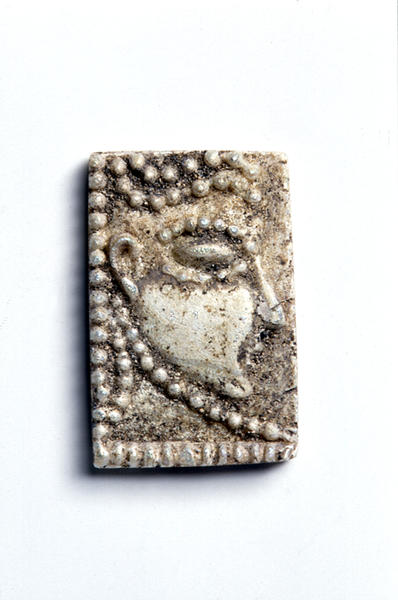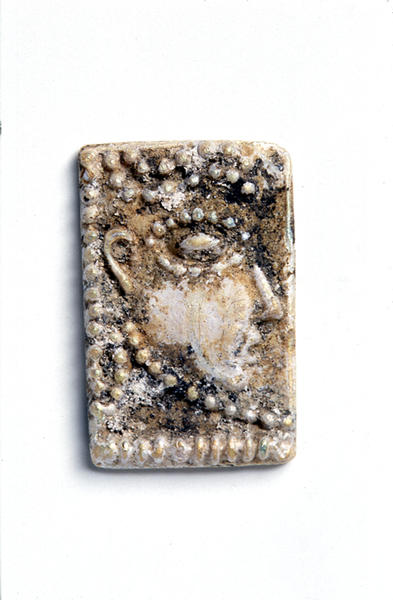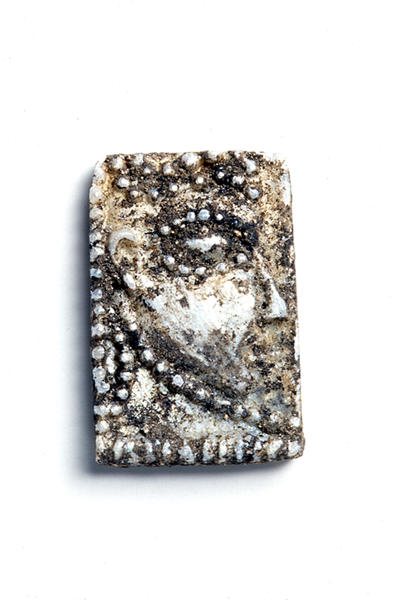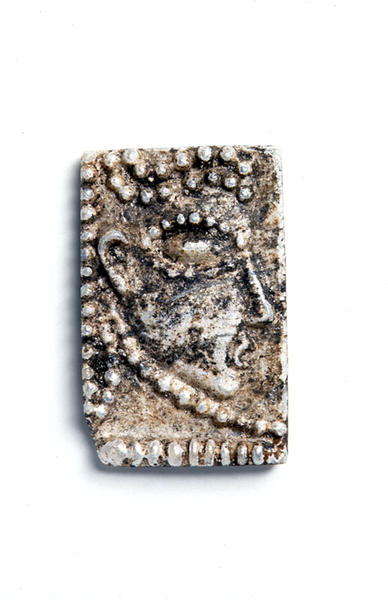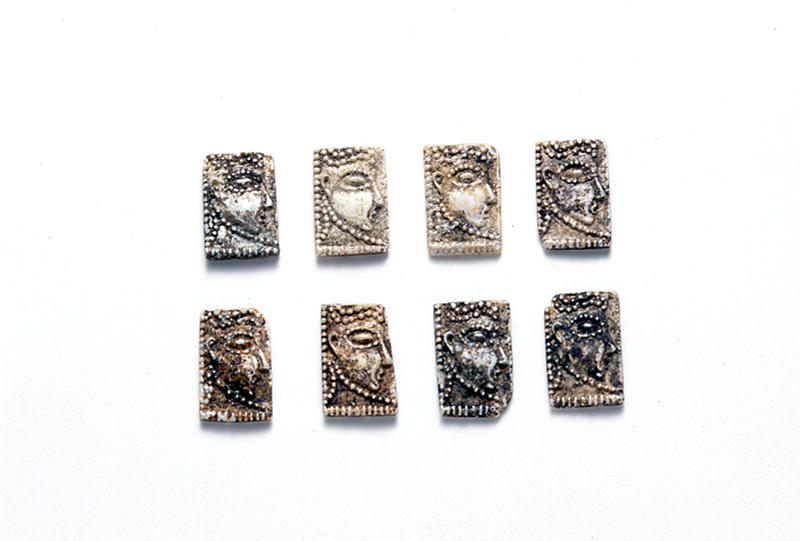人面飾板
- エーゲ海地域
- 紀元前14-紀元前12世紀
- ガラス
様式化された女性の横顔が浮き彫りで表される。厚さ1~3ミリと極めて薄手の小品でありながら、盛り上がった頬から口へかけての表現は立体的である。穴があけられていないので、小箱や家具などの象嵌材として、あるいは金製の枠に嵌め込まれて装身具として使われたのかもしれない。
これらミケーネ文化のビーズや飾板は、現在では風化して白色あるいは黄褐色に変化しているが、本来は紺色のガラスだった。メソポタミアの水色系のガラスと同様に、ラピスラズリを模倣したのだろう。開放鋳型を使って作られており、表面に浮き彫りで文様が表され、裏面はなめらかに整えられる。凍石製の鋳型が出土しているが、ガラスだけではなく、金やファイヤンスの同形の製品もこのような鋳型を使って作られた。表現された意匠はいずれも当時のミケーネ美術に広く使われた伝統的なものである。金の装身具などとともに限られた人々しか手にできない高価な宝物として珍重されたのだろう。これらのガラス製品の繊細で精巧な美しさは、初期のガラス工芸が到達した水準の高さを示す1つの証拠である。
Catalogue Entry
The stylized profile of a woman's face is shown in relief carving. Even though these small works are extremely thin, with thickness ranging from 0.1 to 0.3 cm, the cheek to mouth area is shown in raised, three dimensional form. There are no holes cut into the pieces and thus they may have been made as inlay materials for small boxes or furnishings, or as decoration set into a medal frame.
These Mycenaean culture beads and decorative panels have been weathered so that they appear today as white or yellowish brown, but originally they would have been cobalt blue glass. Like the pale bluish Mesopotamian glass, this Mycenaean glass was probably made to imitate lapis lazuli. They were cast in open molds with motifs shown on the surface in relief while the back surface is smoothly shaped. Steatite molds have been excavated which were used to make glass objects, as well as gold and faience products. The motifs expressed were all traditional patterns used widely throughout that period's Mycenaean arts. These glass beads were probably prized as rare, high priced jewels and like gold jewelry, probably only affordable by a limited range of people. The beauty of the delicate and highly skilled workmanship on these glass items stands as proof of the high standards attained in ancient glass arts.
